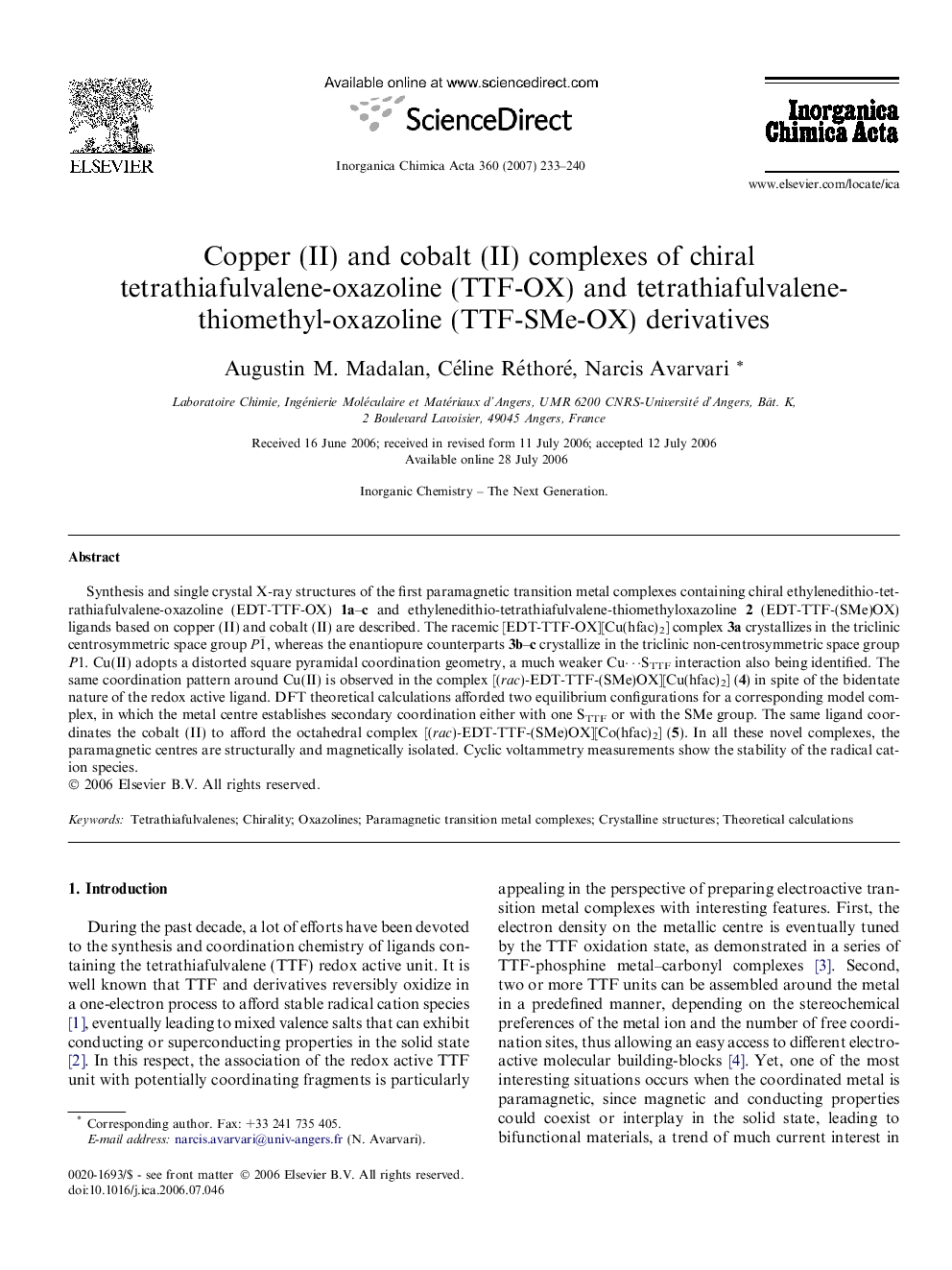| Article ID | Journal | Published Year | Pages | File Type |
|---|---|---|---|---|
| 1310844 | Inorganica Chimica Acta | 2007 | 8 Pages |
Synthesis and single crystal X-ray structures of the first paramagnetic transition metal complexes containing chiral ethylenedithio-tetrathiafulvalene-oxazoline (EDT-TTF-OX) 1a–c and ethylenedithio-tetrathiafulvalene-thiomethyloxazoline 2 (EDT-TTF-(SMe)OX) ligands based on copper (II) and cobalt (II) are described. The racemic [EDT-TTF-OX][Cu(hfac)2] complex 3a crystallizes in the triclinic centrosymmetric space group P1¯, whereas the enantiopure counterparts 3b–c crystallize in the triclinic non-centrosymmetric space group P1. Cu(II) adopts a distorted square pyramidal coordination geometry, a much weaker Cu⋯STTF interaction also being identified. The same coordination pattern around Cu(II) is observed in the complex [(rac)-EDT-TTF-(SMe)OX][Cu(hfac)2] (4) in spite of the bidentate nature of the redox active ligand. DFT theoretical calculations afforded two equilibrium configurations for a corresponding model complex, in which the metal centre establishes secondary coordination either with one STTF or with the SMe group. The same ligand coordinates the cobalt (II) to afford the octahedral complex [(rac)-EDT-TTF-(SMe)OX][Co(hfac)2] (5). In all these novel complexes, the paramagnetic centres are structurally and magnetically isolated. Cyclic voltammetry measurements show the stability of the radical cation species.
Graphical abstractCu(II) and Co(II) complexes with redox active, chiral TTF-oxazoline ligands have been synthesized and structurally characterized.Figure optionsDownload full-size imageDownload as PowerPoint slide
